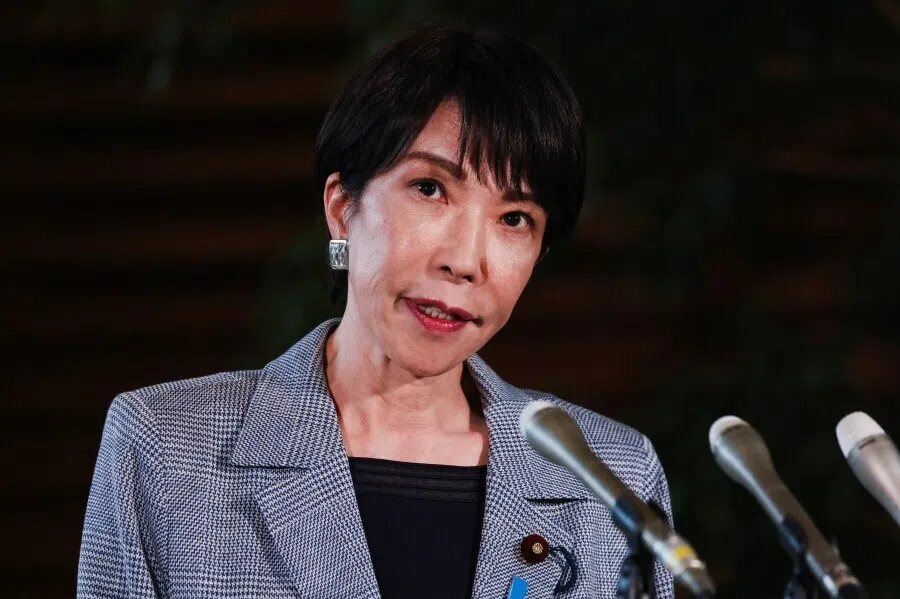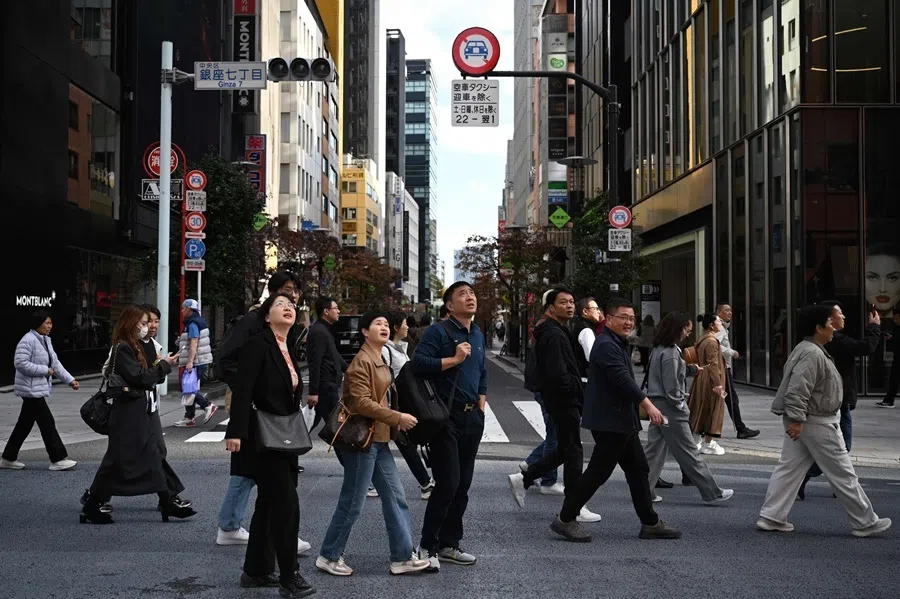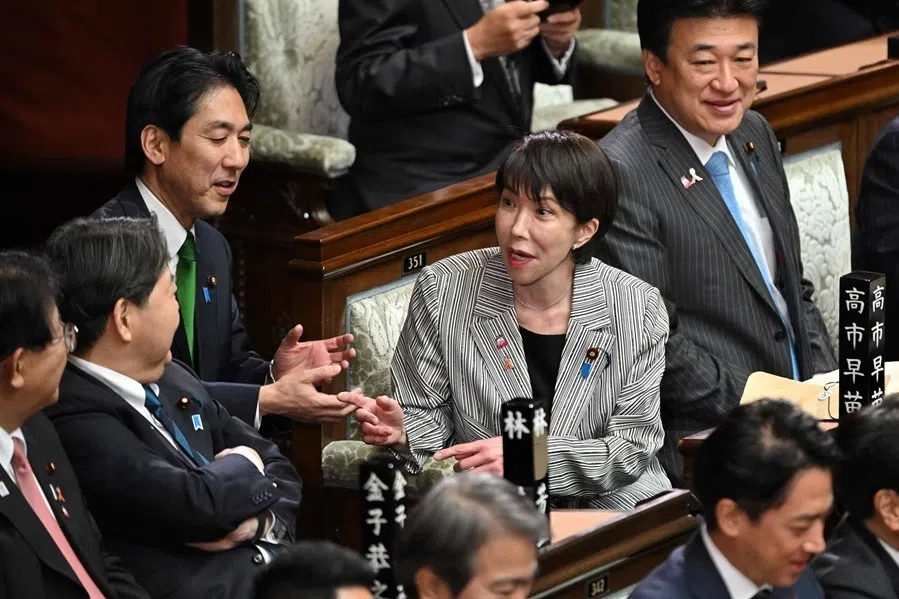It's complicated: Relocating the Chinese embassy in UK
The Chinese embassy in the UK seems to have missed the appeal deadline against a local council's decision to block the embassy's planned relocation to a historic site near the Tower of London. Will this affair mushroom into a larger diplomatic issue warranting reciprocal measures, with the UK government's silence on the matter further grating on Beijing?
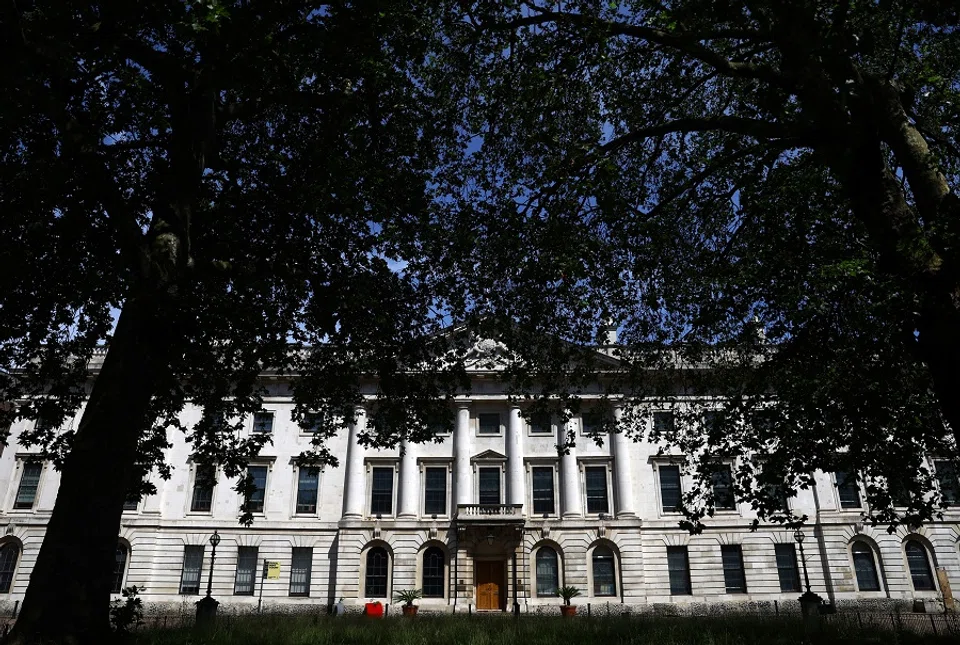
China has been wanting to relocate its embassy in the UK for the longest time. But after its move to a historic site was rejected by the local council last December, its plans were stalled again.
After months of an apparently calm stalemate, Reuters recently reported that China missed the 10 August deadline to appeal against the local council's opposition.
This means that the local council's opposition will take effect and China will need to resubmit building plans to the local council for approval if it wants to build an embassy on the former Royal Mint site in the London Borough of Tower Hamlets.
How it all began
The current Chinese embassy in the UK is an old building in Portland Place, central London - the former Chinese Legation established by the Qing Empire in 1877. Although it underwent renovation and expansion in the 1980s, the building remains a tight space.
Thus, China bought the former site of the Royal Mint - opposite the Tower of London - for about £255 million (US$311 million) in 2018, with plans to build what would be the UK's largest embassy compound on the two-hectare (20,000 square metres) site.
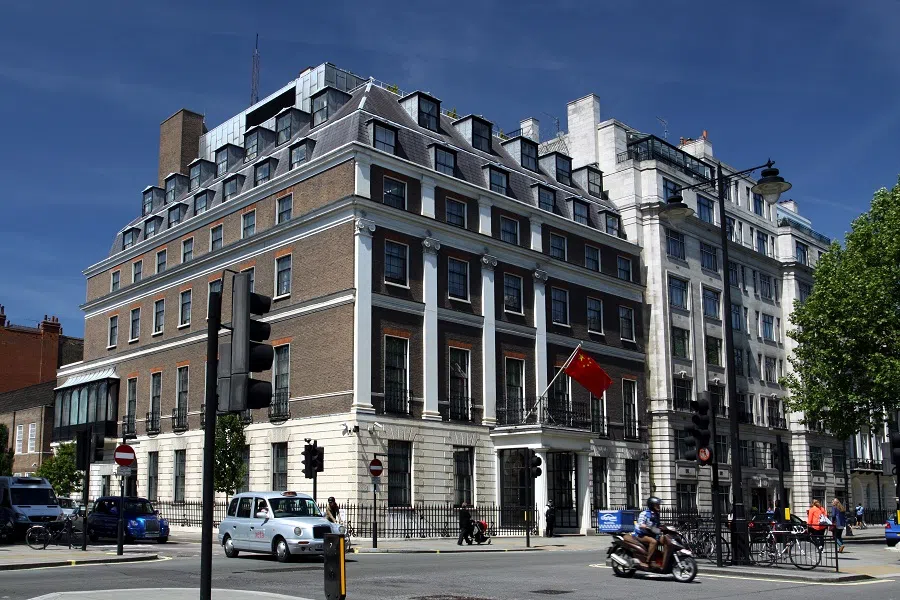
The new embassy is designed by British architect David Chipperfield. Quoting Chipperfield's proposals that were submitted to the Tower Hamlets Council in November 2021, news website Building Design reported that the plan to build China's new London embassy would see the refurbishment of two 19th-century Grade II-listed buildings and the demolition of a 1980s building. The latter would be split into two separate buildings to be used as staff accommodation and a cultural exchange building.
The report submitted to the Tower Hamlets Council back then said that only minimal external alterations would be made to the two listed buildings. Tower Hamlets planning officers had also recommended the scheme for approval as they believed that the proposals were "well-designed" and would deliver a "high quality, well-integrated, inclusive and sustainable place".
According to CNN, until a day before the council meeting, the Tower Hamlets Council had indicated that it was preparing to wave through the design proposals.
It was reported that the Tower Hamlets Council had received over 50 objection letters from residents.
Unexpected rejection?
Yet after hours of intense meetings, the Tower Hamlets Council on 1 December 2022 unanimously rejected the plan in accordance with residents' wishes.
It was reported that the Tower Hamlets Council had received over 50 objection letters from residents. A Tower Hamlets Council spokesperson said, "The committee resolved to reject the application due to concerns over the impact on resident and tourist safety, heritage, police resources and the congested nature of the area."
In February this year, London Mayor Sadiq Khan said that he had no intention of overturning Tower Hamlets Council on the issue.
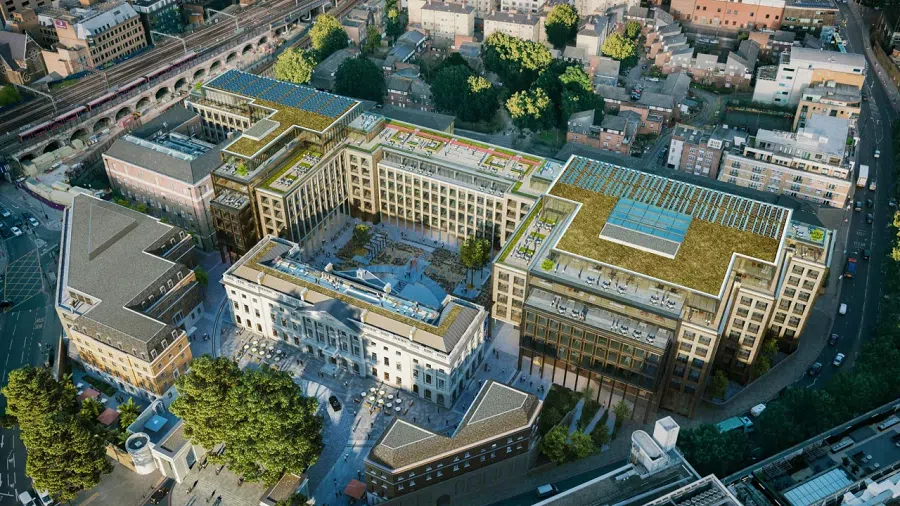
Since March, media outlets have said that China has expressed its displeasure through diplomatic channels and urged the British government to intervene to approve the plan. Among them, Reuters in July quoted four people involved or with knowledge of the talks that Chinese officials have raised their unhappiness in meetings with British counterparts in recent months.
In an email response to Bloomberg, the Chinese embassy in London said that it was the "international obligation" of the host country to provide facilitations and support for the construction of diplomatic premises, and urged "the UK side to fulfil its relevant international obligations". The Chinese foreign ministry also said that China was trying to find a solution "on the basis of reciprocity and mutual benefit".
However, the British government and relevant officials remained silent on the matter even after the deadline passed. Quoting an anonymous official, Bloomberg reported on 10 August that Housing Secretary Michael Gove did not receive China's intention to appeal the planning refusal.
People with knowledge of the situation said that Beijing found it hard to understand why the UK's local councils could object to the building of embassies. Moreover, it had also expressed its displeasure with the British government's silence. But British officials said that the prevailing approval process was transparent and in order.
Why did residents oppose the plan?
Based on reports from BBC, The Guardian, The Telegraph and CNN, Tower Hamlets residents opposed China's embassy building plans for three main reasons: historic preservation, residents' rights and interests, and political stance.
Information shows that the former Royal Mint site was a mass grave where hundreds of victims were buried during the Black Death in the 14th century; in the 16th century, the site was a royal residence. Thereafter, it was a logistical base for the Royal Navy until 1739. From the early 19th century to 1967, the Royal Mint was located here, producing the currency that circulates throughout the UK. After the Royal Mint fully withdrew from the site at the turn of the century, it became a commercial site while retaining its historical architecture until it was purchased by China.
The embassy's design plan includes installing many surveillance cameras around the perimeter to ensure 24-hour monitoring of the embassy, and local residents are concerned that their daily lives will also be monitored by these cameras.
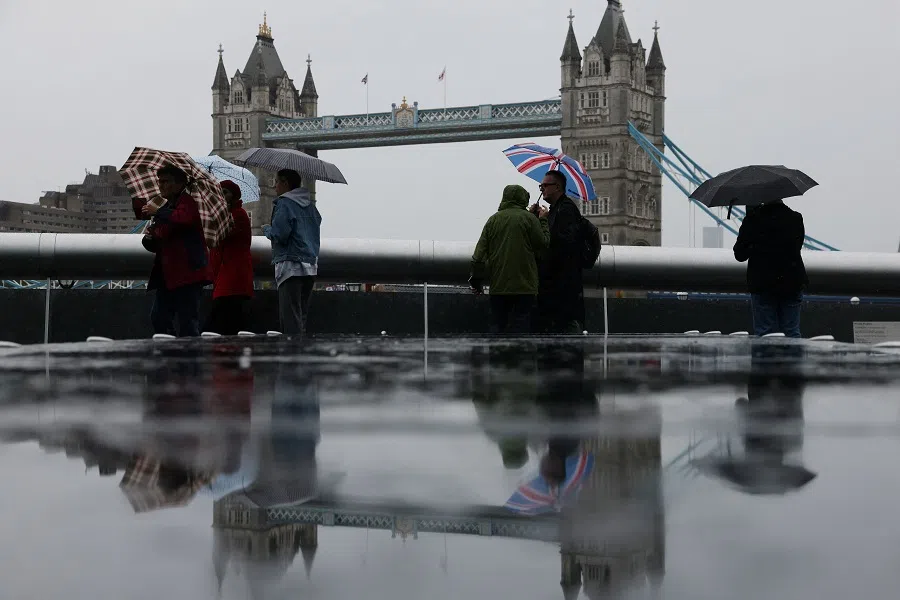
Thus, some of the objections were that the construction of a Chinese embassy in the area would not only destroy the historic building, but also affect the preservation of Britain's history.
On the other hand, situated on the 20,000 square metres of land acquired by China are not only the old buildings of the Royal Mint, but 100 residential houses completed in 1989. For the 300 residents who still live here, China would become their "landlord", potentially leading to disputes over property ownership and also making them feel that their privacy was not assured.
The embassy's design plan includes installing many surveillance cameras around the perimeter to ensure 24-hour monitoring of the embassy, and local residents are concerned that their daily lives will also be monitored by these cameras.
Local resident leaders have also raised concerns that this area is just a street away from the Tower of London and Tower Bridge, already a densely populated and congested area. Building an embassy here might inconvenience tourists and residents even more and could affect the visual aesthetics of the Tower of London. For instance, the Chinese national flag might appear in future aerial shots of the Tower of London.
Map searches also show that currently, there are no embassies or consulates of any country in the Tower Hamlets area. All of these factors could be reasons for the local community to oppose plans by any country to build an embassy here, but British public opinion on Chinese politics and human rights issues was also a crucial factor influencing this decision.
... nearly 40% of its residents were Muslims, the highest proportion in the UK.
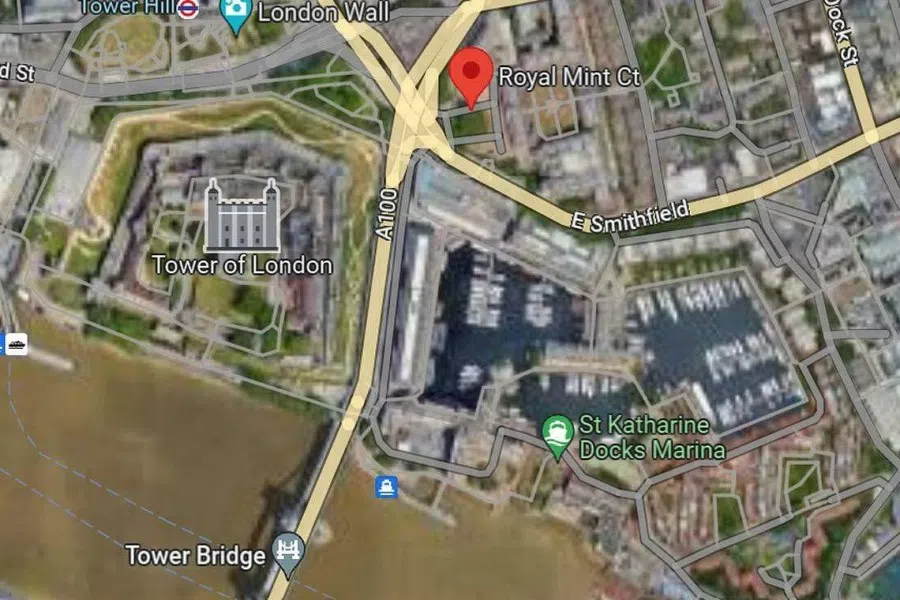
Statistical data released by the Tower Hamlets area shows that in 2021, nearly 40% of its residents were Muslims, the highest proportion in the UK. This means that the controversies surrounding China's treatment of Uighur Muslim human rights could significantly impact the residents' perspectives and choices.
Deteriorating China-UK relations
Back in March 2021, Tower Hamlets councillors proposed naming roads near the area with elements like Tiananmen, Uighur, Hong Kong, Tibet and so on, to "make clear where our own standards and principles apply". However, this proposal was not passed.
While current China-UK relations are not as tense as China-US relations, it is still far from the "golden era" of the Cameron administration, and relations have deteriorated rapidly, especially after the 2019 Hong Kong extradition bill protests.
Just over a month before the new embassy plan was rejected, an incident occurred on 16 October at the entrance of the Chinese consulate-general in Manchester, where protesters were attacked by consulate staff. This incident quickly escalated into a diplomatic dispute and concluded with China recalling six individuals, including the consul general.
Internet searches reveal that organised protest activities have occurred nearly every month over the past year outside the Chinese embassy in London. Tower Hamlets officials also point out that if the Chinese embassy is relocated here, it is likely to become a site for numerous gatherings and protests related to China's government or international political events.
... if the Chinese embassy does relocate to the Tower Hamlets area, local residents can anticipate being troubled by a series of "China issues"...
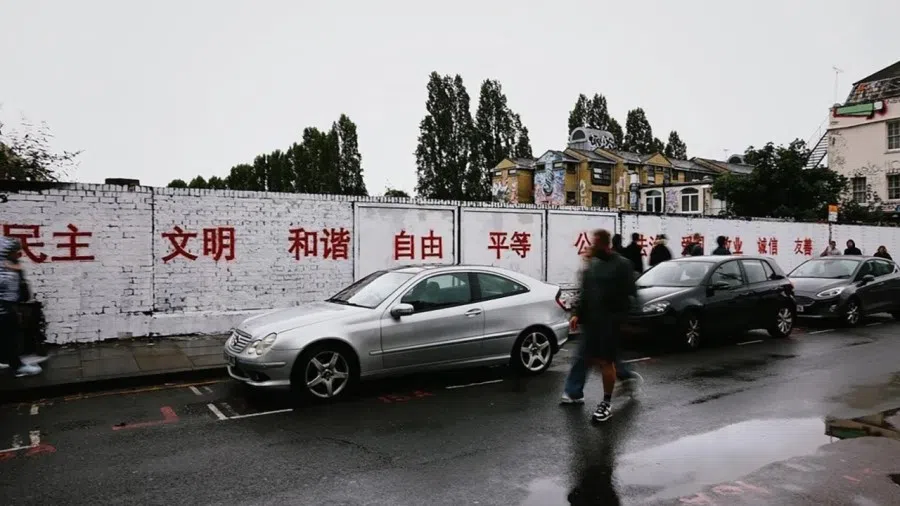
On the other hand, tensions between the two countries are also reflected in civilian activities. For instance, graffiti appeared on a wall in London's East End, with prominent slogans promoting China's official socialist core values like prosperity, democracy, civility and harmony. This sparked widespread dissatisfaction, prompting a host of secondary works expressing unhappiness.
All these examples show that if the Chinese embassy does relocate to the Tower Hamlets area, local residents can anticipate being troubled by a series of "China issues", which does not seem to be what they want; it is no surprise there is opposition from the local community.
Further impact China-UK relations?
While neither country has heavily publicised this matter, the blocking of China's new embassy plan will undoubtedly impact China-UK relations.
For instance, Reuters previously quoted anonymous Chinese officials suggesting their belief that the blocking was politically motivated, and that the British government had intentionally hindered the embassy plan and orchestrated local opposition. Of course, British officials have refuted these claims, stating that the decision was made independently by the local council.
British officials believe that while there is no direct connection between the two matters, the rebuilding plan for the British embassy in Beijing seems to have been affected, as it has not been approved.
While current Prime Minister Rishi Sunak has announced the end of the golden era of bilateral relations, he does not intend to sever ties with China. Instead, he seeks a balanced approach, strengthening cooperation in trade and investment while ensuring national security.
... Chinese officials are unhappy with the silence of the Sunak government regarding the embassy issue.
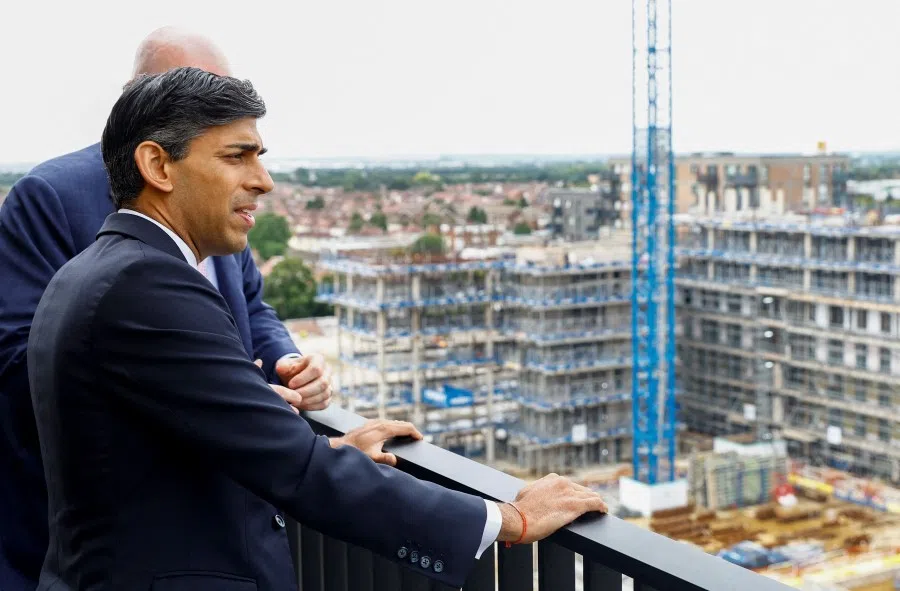
However, this is no easy task. Since becoming prime minister in October last year, Sunak has yet to communicate directly with Chinese President Xi Jinping, as their scheduled meeting during the November G20 summit in Bali was cancelled at the last minute.
Judging from the attitudes of anonymous sources quoted by various media outlets, Chinese officials are unhappy with the silence of the Sunak government regarding the embassy issue. If 10 Downing Street continues to remain silent, that will clearly not help in repairing the bilateral relationship.
Meanwhile, conservative forces within the UK have also criticised the Sunak government's silence. Former Conservative Party leader Iain Duncan Smith criticised the government for not taking a firmer stand against China's embassy plan, emphasising that national security should be paramount in bilateral relations.
Since China has not appealed directly, it is likely to tweak the existing embassy plan and resubmit it. However, limited tweaks might not address the core concerns of local residents for the local council's approval.
If reports are true that China will seek a commitment from the UK government to intervene in the approval of the next embassy plan, the UK government will find itself in a more complex situation. They will need to decide whether to comply with China's claimed international obligations and go against the wishes of their own citizens in approving the embassy plan, or to respect the democratic decision of the local community, even if it further aggravates China and damages the bilateral relationship.
This article was first published in Lianhe Zaobao as "中国的伦敦新使馆计划黄了?".


